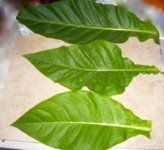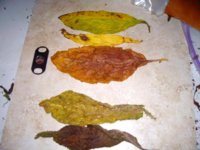Bex
Well-Known Member
This is extremely interesting, particularly as you advise the leaf was green and crispy dry, and yet, when exposed to the elements (and presumably moistened somewhat with rain, etc??) the leaf now shows some change. There must be some 'chemistry' still going on, that has removed the chlorophyll from parts of those leaves and turns them brown - otherwise, I would assume that they would just stay green and crispy. I guess this is similar to what happens on trees? That the leaf is no longer being fed, so the chlorophyll deteriorates leaving the brown leaf? In any event, the result of your experiment will be interesting (for those of us who have cured and still have green leaf after that process....perhaps there is still hope.....)







